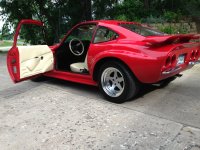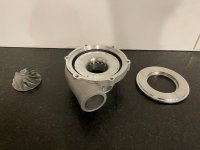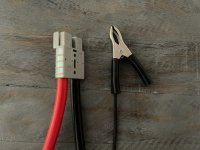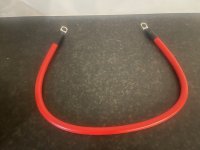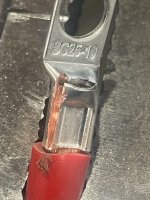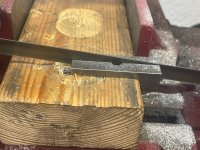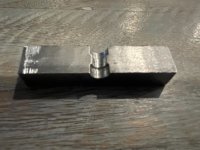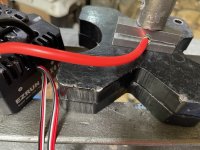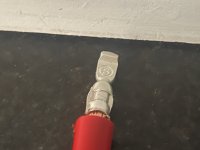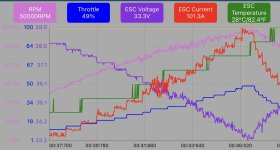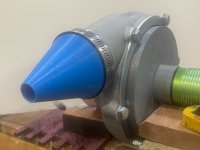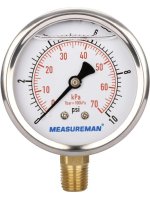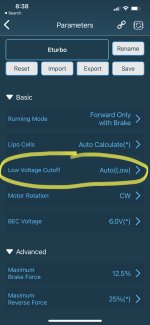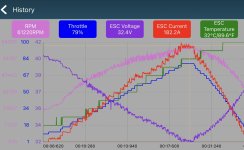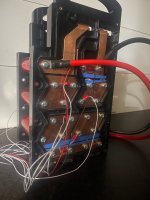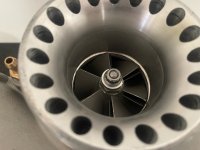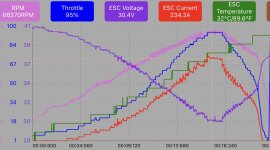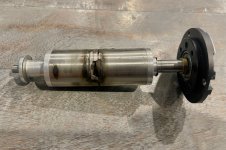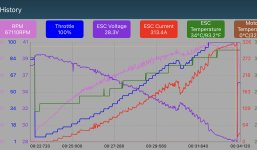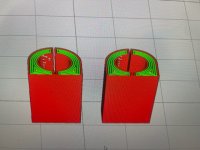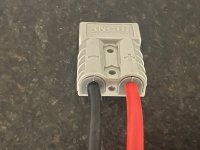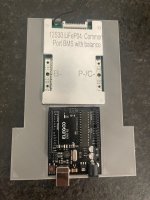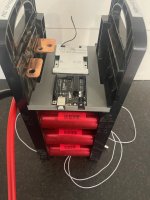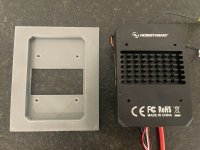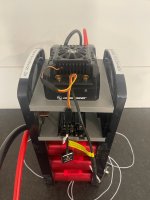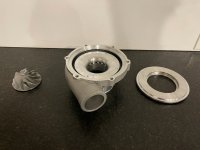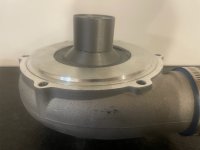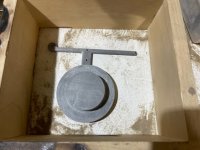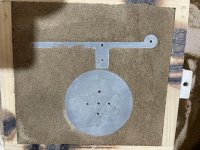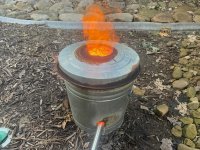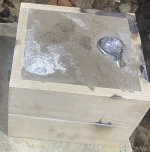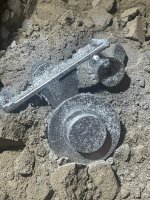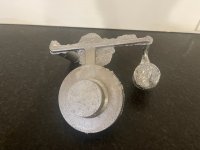Thanks for the kudos on the homemade DIY heavy duty wire crimper. It worked great, and the cables are the least of my worries now. That said, I do like the looks and flexibility of the Amazon crimper. Thanks for the link. I need to ponder how to assess my battery build. It came with solid copper bus bars and screw in terminals, which is one reason I chose those batteries.
On to the really exciting progress! The 10 PSI gauge showed up. So, I hooked up the new analog boost gauge, put on my safety gear, and spooled up the e-turbo way beyond anything I had tried before…
On the first pull, I hit 4 PSI (woohooo), then 4.5 psi, then 5 psi, then 6 psi, then 7 psi. So I have achieved my design goal for pressure. But each run was ended prematurely by the ESC when the voltage dipped to 30. This is what Alex and other brilliant folks on this forum foresaw. Below is a snippet of one of the runs all which look almost exactly the same.
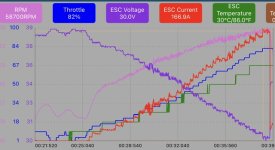
So for each run, I max out between 58-59K RPM and 6-7 PSI at almost 167 amps when the battery gets down to 30 volts.
My next challenge is how to maintain boost at a steady state for ~5-10 seconds. Although much of my boost will be shorter spurts than that.
So the limiter of my set up and is now my sub $200 budget battery (although, it did get me up and running and was fun to build.) My next step is to charge my battery fully, as I have not charged it since I built it and have had 51 pulls in the data log on it.
I have not invested in a battery charger that can deliver the 3.65 x 12 cells = 43.8 volts. So, right now half of my battery is charging at 3.65 x 6 = 21.9 volts. I’ll get both sides charged up and get some data with a full battery charge and see if that makes a difference.
Else I figure will explore one of the following paths:
- See what boost level I can maintain without going under 30 volts
- Add a couple of cells? Perhaps that could offset the precipitous decline. Or maybe it is about percent voltage drop.
- Explore other battery options (in which case my current battery becomes my car battery, but requires different set of bus bars).
————— UPDATE —————
I was grateful that the ESC auto protect feature worked and kept my batteries from over discharging and frying my cells.. But, I wanted to verify the 30V lower limit from todays trials. I thought it kinda made sense 30V / 12 cells = 2.5 volts per cell.
But,I have good news and more paths to explore with this budget battery set up. Here are the stats on these Headway cells form the battery hookup website. So the cutoff discharge voltage is 2 volts, not 2.5 volts.
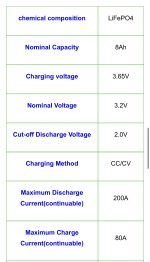
If I understand this correctly, my lower limit is not 30 volts, but rather 12 cells x 2.0 volts = 24 volts! So I have a lot more voltage sag available before frying my batteries. Don’t get me wrong, I don’t want voltage sag, but I will take some extra amps if I can find them to increase the operating range of my system.
If I am getting 167 amps / 9 volt drop = 18.5 amps per volt drop. If I allow 5 more volts drop, I should be able to get theoretically another ~ 90 amps or so. Currently 167 amps x 30 volts = 5,010 watts / 746 watts per hp = 6.7 HP. Another 90 amps would theoretically get me to 250 Amps x 25 volts = 6,250 watts / 746 Watts per HP = 8.4 HP. That might give me just enough breathing room (pun intended) with my current set up.
Next step is to reprogram ESC for 27 volt cut off and see how things behave then try a 25 volt cut off. I will post the data for these runs. Then after that, I will get a micro- controller involved in sending the PWM signal and target 3 seconds, then 5, then 7, then 10 seconds continuous.

